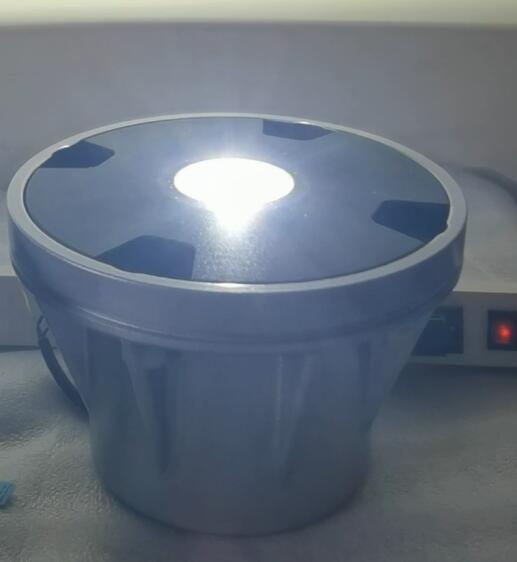The TLOF helipad (Touchdown and Liftoff area) is an essential element in helicopter landing zones, providing the designated space for safe and efficient operations. As helicopters play an increasing role in transportation, emergency services, and logistics, the importance of well-designed TLOF helipads continues to grow. This article explores the critical aspects of TLOF helipad design, functionality, and future developments.
Defining the TLOF Helipad
A TLOF helipad is the primary landing and liftoff area for helicopters, forming the operational core of heliports and helistops. Positioned within the Final Approach and Takeoff (FATO) zone, the TLOF must meet stringent requirements for surface quality, load capacity, and safety.
Key Design Features of a TLOF Helipad
Surface Characteristics
The TLOF surface must be flat, durable, and skid-resistant to ensure stability during operations.
Common materials include reinforced concrete and high-performance asphalt, designed to withstand helicopter weights and dynamic forces.

Dimensions and Markings
The size of the TLOF helipad varies based on the rotor diameter and operational needs of the helicopters it serves.
Clear markings, such as the heliport identifier, directional arrows, and perimeter lines, improve pilot visibility and landing precision.
| tlof helipad |
| tlof helipad light |
Lighting Systems
Proper lighting is crucial for nighttime and low-visibility operations. Green perimeter lights and inset floodlights enhance visual cues for pilots.
Advanced lighting systems can adjust brightness automatically based on ambient light conditions.
Load-Bearing Requirements
A TLOF helipad must support both static and dynamic loads, accounting for helicopter weight, touchdown impact, and potential emergencies.
Safety and Regulatory Standards
To ensure operational safety, TLOF helipads must comply with international and national regulations:
ICAO Standards
The International Civil Aviation Organization (ICAO) prescribes detailed guidelines for TLOF helipads, including dimensions, markings, and obstacle-free zones.
FAA Guidelines
The Federal Aviation Administration (FAA) in the United States outlines specific requirements in its Advisory Circulars, covering both private and public-use helipads.
Local Authorities
Regional aviation bodies may impose additional standards tailored to local conditions and operational demands.
Applications of TLOF Helipads
Emergency Medical Services (EMS)
TLOF helipads are vital for air ambulance operations, enabling quick and efficient patient transport to medical facilities.
Corporate Aviation
Many businesses utilize TLOF helipads for executive travel, reducing transit times and improving connectivity.
Public Infrastructure
Urban TLOF helipads support police, fire services, and disaster response teams, enhancing public safety and emergency preparedness.
Offshore and Remote Locations
TLOF helipads are critical in offshore platforms, mining operations, and remote research stations, facilitating essential transport.
Innovations in TLOF Helipad Technology
The evolution of technology has significantly improved the functionality and efficiency of TLOF helipads:
Eco-Friendly Designs
Solar-powered lighting systems and sustainable construction materials are reducing the environmental impact of TLOF helipads.
Smart Monitoring Systems
Real-time monitoring of weather conditions, structural integrity, and operational status enhances safety and maintenance.
Modular Helipads
Prefabricated and modular designs enable rapid deployment in temporary or remote locations.
Augmented Reality (AR)
AR-based navigation aids assist pilots in locating and approaching TLOF helipads with greater accuracy.
Maintenance and Upkeep
Regular maintenance is critical to the longevity and reliability of TLOF helipads:
Surface Inspections
Routine checks for cracks, wear, and debris ensure a safe and functional landing area.
Lighting Maintenance
Ensuring all lighting systems are operational and meet brightness standards is essential for nighttime use.
Compliance Checks
Periodic reviews of the TLOF helipad’s compliance with regulatory standards help maintain safety and operational approval.
The Future of TLOF Helipads
As helicopter operations expand, TLOF helipads will play an even more significant role in global transportation networks. Emerging trends include:
Urban Air Mobility (UAM): The integration of TLOF helipads into vertiport designs to support advanced air mobility vehicles.
Enhanced Automation: Use of autonomous systems for helipad lighting, monitoring, and guidance.
Sustainable Infrastructure: A continued focus on eco-friendly designs to align with global environmental goals.
The TLOF helipad is a cornerstone of helicopter operations, combining precision engineering with strict safety protocols. By adhering to regulatory standards and embracing technological advancements, TLOF helipads ensure efficient and secure helicopter landings and takeoffs. As innovation continues to shape the aviation landscape, the role of TLOF helipads will undoubtedly expand, supporting the next generation of aerial transportation.